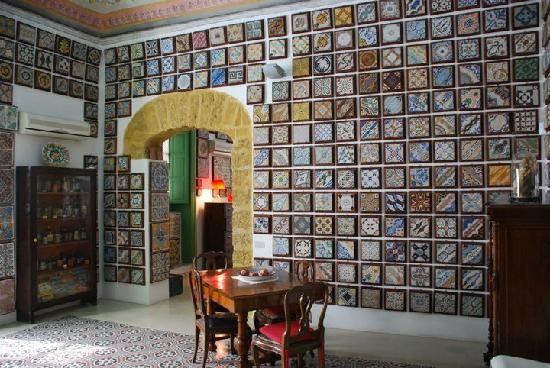Museums are an integral part of Italian culture and an invaluable attraction for tourism.
When we think of Italian museums, we will probably remember the Vatican Museums, the Borghese Galleries of Rome, and the Uffizi Gallery of Florence. But there are over 4,800 museums, galleries, monuments, and similar institutions in Italy. Most are not known as well as the state museums that attracted 50 million visitors in 2017. Instead, they are the small and niche houses of history and art hidden in the quiet towns. A collection of eight such locations promises to suit any willing adventurer:
The Bora Museum
Trieste's geographical location, situated between the warm sea and the colder inland mountains, makes it vulnerable to vicious winds. This airflow, which occurs most frequently in the Winter months, is called Bora. The Bora Museum stands to honor the phenomenon that shaped Trieste's culture. There, you can learn about the science behind wind, literature inspired by the Bora, and experience the Bora in a simulated Triestine setting.
Via Belpoggio 9, Trieste.
Ecomuseum of the Houses of the Earth
The museum takes up the space of an entire village called "La Ficana." During the thirteenth century, houses were built there out of raw earth and in the nineteenth century they were refounded. The area is 7000 square miles and accessible with or without a tour guide, who can take you through the history of this unique construction technique and the neighborhood's inhabitants.
Borgo Santa Croce 87, Macerata.
Museum of Honey
At the end of the nineteenth century, Pietro Marigo began a beekeeping and honey-cultivating business, that today is continued still by the Marigo family. They created the Honey Museum in 2001 to showcase their art. There, we can learn about the intricacies of the life of bees and the science of the honey's taste.
Località Tobia 5, Lavarone, TN.
Museum of Majolica

Majolica is the technique of painting and glazing intricate patterns on clay tiles and pottery. The Museum of Majolica features almost 5000 painted tiles, some of which date back to the fifteenth century. The restored seventeenth century palazzo also displays vintage toys, boxes, and stationary. Besides the elaborate wall decor, the museum is staged as a livable space. There is also an adjacent bed and breakfast that offers four suites decorated with the majolica.
Via Giuseppe Garibaldi 11, Palermo.
Museum of Popular Instruments
The museum houses over 600 popular musical instruments of centuries past and countries abroad. The instruments include a French harmonium of the nineteenth century and an Azerbaijani Setar. It is even possible for you to touch and play (or try to play) the instruments with a guided tour. The museum curators are also the proud owners of a musical library heritage that dates back to the nineteenth century.
Chiesa di Santa Brigida, Via Battisti 17, Roncegno, TN.
Museum of PreCinema
This museum, founded in 1998 by Laura Minici Zotti, tells the story of entertainment before the invention of primitive cinema by the Lumière brothers. You will find yourself traveling back in time to learn about the "vision machines" that were enacted before the moving picture. The museum is small but tells an important story of human imagination.
Prato della Valle 1/A, Padova.
Ossuary of Custoza
The ossuary museum, which has stood on the Belvedere Hill since 1879, memorializes the fallen of the first (1848) and the third (1866) Italian wars of independence. There is a crypt where visitors are admissible. It holds the remains of Italians and Austrians that fought in the battles at Custoza. From the outdoor gallery, you can view the surrounding mountains and green landscape.
Strada Ossario 17, Sommacampagna, VR.
Small Museum of the Diary
The city offers its National Diary Archive to the eyes and ears of visitors. In the museum you will find more than 9000 real testimonies from Italians about their personal lives and historical events. The curators bring to Italy an interactive and unique way to experience history. And when inspired, you can even submit your own entry(s) to the museum.
Palazzo Pretorio, Piazza Plinio Pellegrini 1, Pieve Santo Stefano, AR.

















